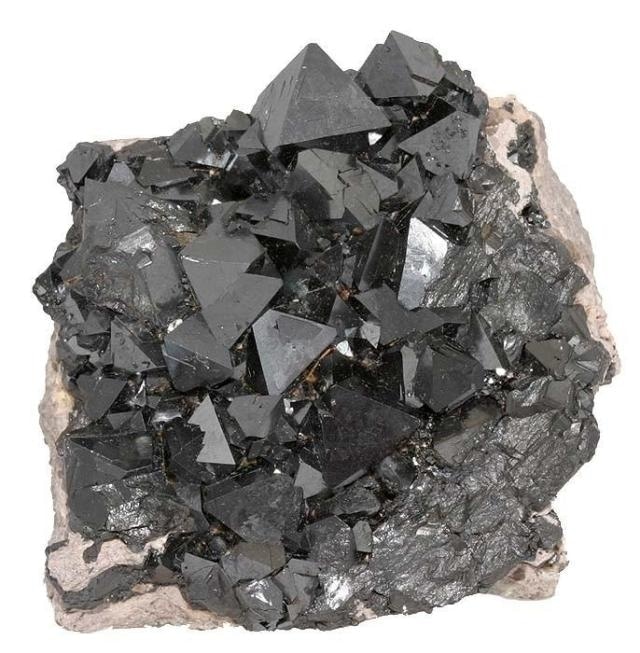Apr 18 2016
The behavior of the recently-discovered Fe4O5 iron oxide has been studied by a group of international researchers, including Russian scientists from Moscow State University. These researchers have successfully explained the complex structure of Fe4O5, and they have also presented a report on its unique properties. The report was published in the latest issue of Nature Chemistry.
 An international group of researchers including Russian scientists from the Moscow State University has been studying the behaviour of the recently-discovered Fe4O5, iron oxide. The group has succeeded in describing its complex structure, and proposed an explanation for its very unusual properties. Credit: The Lomonosov Moscow State University
An international group of researchers including Russian scientists from the Moscow State University has been studying the behaviour of the recently-discovered Fe4O5, iron oxide. The group has succeeded in describing its complex structure, and proposed an explanation for its very unusual properties. Credit: The Lomonosov Moscow State University
The team identified that Fe4O5 iron oxide experiences an unusual phase transition linked to the formation of charge-density waves when it is cooled to temperatures below 150 K. This transition results in a four-dimensional crystal structure. Artem Abakumov, Senior Researcher at the Chemistry Faculty of the Department of Electrochemistry at the Lomonosov Moscow State University and one of the paper's authors, stated that future study on this material will focus on obtaining a basic understanding of the bonding between crystal and magnetic structures.
This research originates from the year 1939, when E.J.W. Verwey, a German physicist, first identified that the iron oxide Fe3O4, mostly referred to as the mineral magnetite, had an unusual phase transition. In its standard state magnetite is a relatively good electrical conductor, but it almost becomes an insulator when it is cooled below 120 K, reducing its conductivity. Scientists guessed the reason of this transformation by highlighting that the iron atoms organized themselves into an ordered structure when below 120 K. The electrons in this structure, are prevented from freely moving within the material and behave as charge carriers, so that it oxides and becomes a ferroelectric. The scientists found it difficult to describe what actually changes in the structure. An attempt to decipher this change has been made over the past century by physicists. The only suggestion made was that the phenomenon occurred due to the presence of iron atoms in two varied oxidation states (valences) and their ability to develop ordered structures.
It was only in 2012 that an answer to this question was found by a team of researchers, headed by Prof. Paul Attfield of Cambridge University. These researchers synthesized magnetite single crystals of superior quality and then deciphered their structure. Based on an earlier suggestion, scientists demonstrated the occurrence of a change in the ordering. The scientists discovered that two- and three-valent iron atoms organized themselves into trimerons, which refers to groups of three.
The authors of the article focused on considering another type of iron oxide, Fe4O5, which an American research team recently discovered. This new type is a unique form of oxide that can only be developed under very high pressure and high temperatures. This establishes the fact that this new type of oxide cannot be found on the surface of the earth, and is now present along with other oxides comprising of huge levels of oxygen. The new oxide is found hundreds of kilometers beneath the surface of the planet.
Sergey Ovsyannikov discovered this new oxide, which was analyzed by a group led by Dr Leonid Dubrovinsky of the University of Bayreuth in Germany. Dr Leonid Dubrovinsky specializes in the synthesis of materials under high pressure. This group identified that the oxide comprises a phase transition phase very much like that discovered by Verwey in magnetite. However, it varies when present in different temperatures, and an extremely complex structure configuration is obtained.
We have found that here, just as in magnetite, when cooling to lower than 150K occurs, an unusual structure evolves. It's something of a mixture between standard charge density waves forming dimers, and the situation with the trimerons that was observed in magnetite. This was very complicated in the case of Fe4O5 -- what's known as a 'incommensurately modulated structure", in which we can't identify three-dimensional periodicity. However, the periodicity can be observed in a higher-dimensional space -- in this specific case, in the four-dimensional space. When we mention the four-dimensionality of such structures, we are not actually talking about the existence of these oxides in four dimensions, of course. This is just a technical construct for the mathematical description of such highly complex ordering.
Artem Abakumov, Senior Researcher, Department of Electrochemistry, Lomonosov Moscow State University
The charge-ordered structure of Fe4O5 continues to stay centro-symmetric, without showing any kind of ferroelectric properties, despite the existence of similarities between the behaviors of Fe4O5 and magnetite. Scientists have developed a special interest towards Fe3O4 because magnetite belongs to multiferroics, which is a class of materials exhibiting two different types of ordering, such as magnetic and electric, in a simultaneous manner. The bonding of these two orders allows the magnetic field effect on the material to change its electric polarization, or magnetisation changes that are effected by the electric field.
If this happens then we get a bifunctional material. That's of interest not only from the fundamental physics viewpoint or solid-state chemistry -- but also in terms of how it could be put into practical use. It could be used in sensors - for example, in magnetic field sensors. The only drawback is that normally a coupling of a magnetic and electrical order is pretty weak, and only appears at low temperatures. Comparative analysis of the crystalline, electronic and magnetic structure of Fe4O5 and magnetite will give us a better shot at studying the relationship of the magnetic and electrical order in these kinds of materials.
Artem Abakumov, Senior Researcher, Department of Electrochemistry, Lomonosov Moscow State University